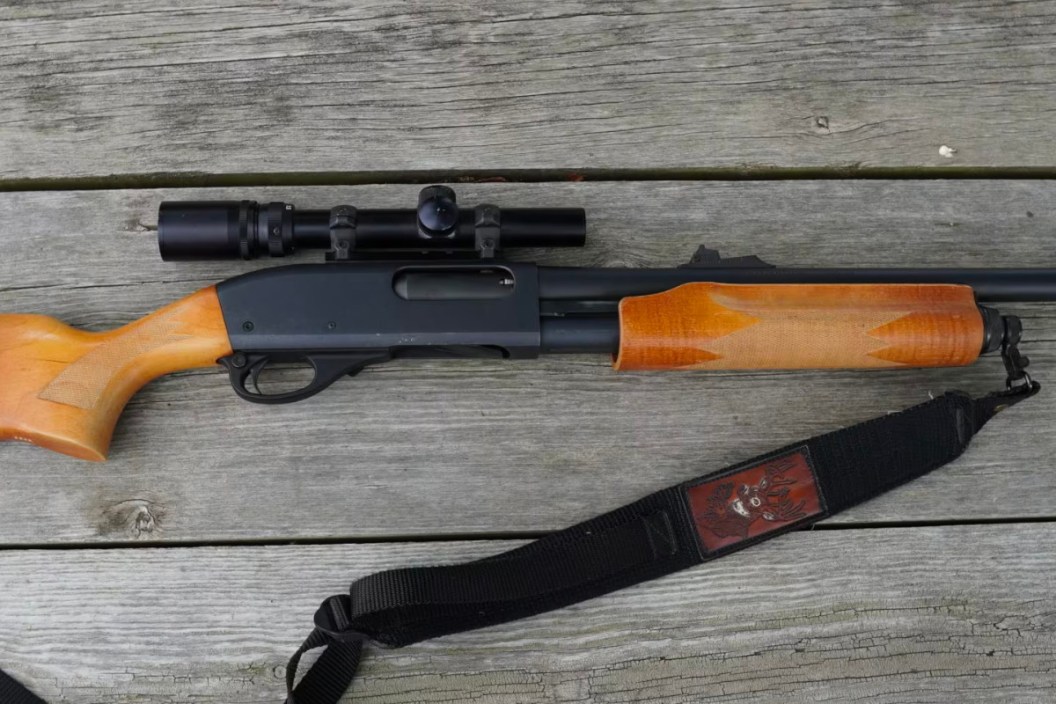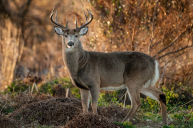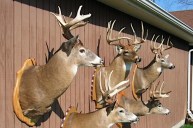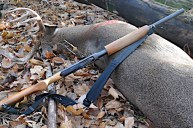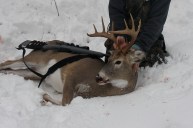The 12-gauge slug passed perfectly through both lungs of the deer. The old buck never knew what hit him. I watched as the gnarly 10-pointer ran about ten yards before piling up behind a small brush pile. It was the opening morning of Michigan's deer season, and once again, my Remington 870 came through. Since I've lived my whole life in Michigan's Zone 3, aka: "the shotgun zone," the only firearms I'd ever used for deer hunting until recently were shotguns and muzzleloaders. You might find these restrictions a bit puzzling if you're not from the Midwest or the Eastern United States.
It's not that shotguns are ineffective for deer. However, they are pretty limited in terms of lethal range, and they also have a lot of recoil. Why would state wildlife agencies purposely put the hunters who fund them through license fees at a disadvantage in the deer woods? Well, more factors are in play than you think in that decision.
The Safety Factor
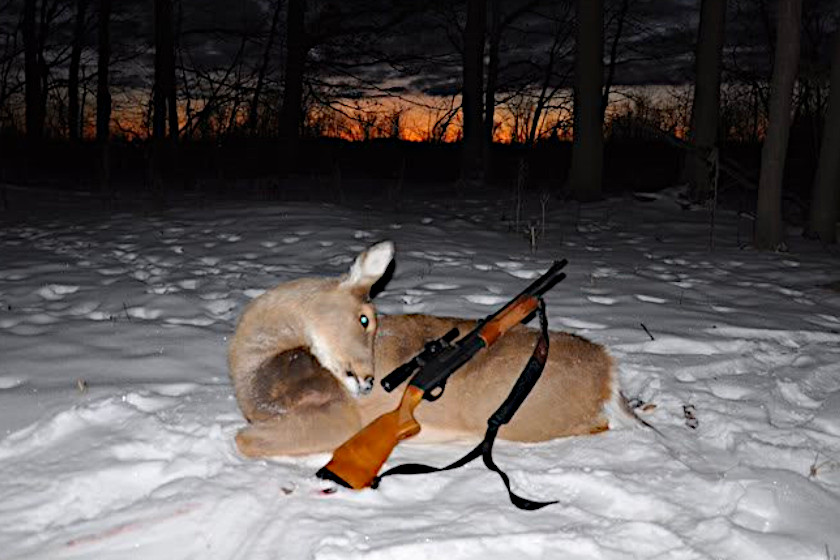
Travis Smola
Most hunters with a passing knowledge of shotgun and muzzleloader-only restrictions know a significant factor is usually safety. Here in the Midwest, we've got a lot of open agricultural fields, a lot of flat land with few natural backstops for a stray bullet. When you consider how far a centerfire rifle bullet can travel, it brings up concerns about roads, homes, and businesses being hit by a bullet that misses the mark. This becomes an even more significant concern in a smaller state like New Jersey, where population density is high, and hunting parcels are smaller.
It made sense for the time. Many states developed these regulations 50, 60, or even more than 70 years ago when shotgun slug technology was more limited. We'll touch on that later, but many shotgun slug designs were only accurate inside 50 to 75 yards at best for years. For flat, populated areas with no safe backstops where stray shots were a concern, restricting hunters to shotguns made the most sense.
You can see that thinking reflected in regulations to this day. As I already mentioned, Michigan is divided up into three zones. Here in the southern half of the state, which is the most populated, we had shotgun and muzzleloader-only restrictions for decades. However, the regulations are eased once you head far enough north, to northern Michigan's wild and emptier wilderness. It's almost an identical scenario for Minnesota, which limited shotguns only to the southern part of the state.
The Conservation Factor
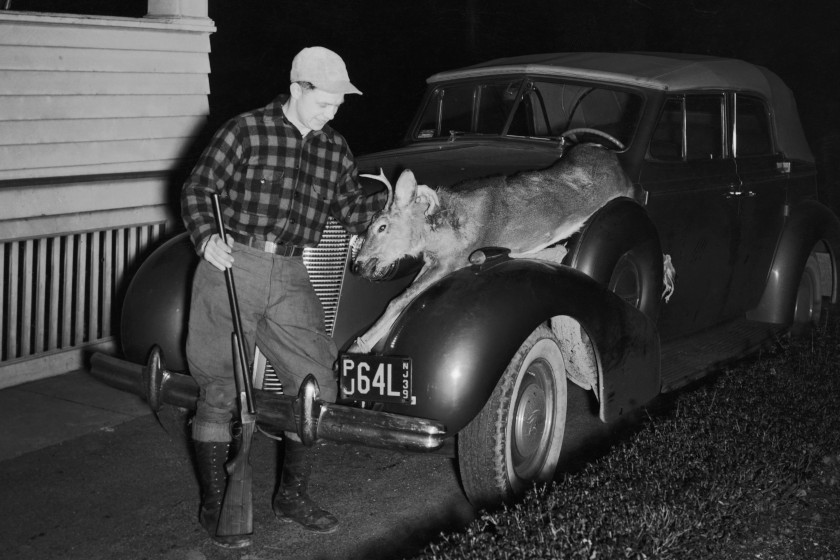
FPG via Getty Images
Not many hunters know this, but conservation was often a factor in a state adopting shotgun-only rules. If you research the history of your state's deer season, you may be surprised to find the current season dates were adopted as recently as the 1950s or 60s. That's because, in the early 1900s, whitetail deer populations had been decimated over much of North America. Many states didn't have a season for decades simply because there were no deer to hunt. It was only through a lot of work by wildlife agencies that populations were re-introduced to many areas. As deer populations rebounded, many hunters wanted to start hitting the woods again.
State wildlife agencies knew they needed to start seasons again, but at the same time, they didn't want hunters to harvest too many animals. Otherwise, they'd have to start the whole conservation process again. Illinois is one of those states. The Land of Lincoln shut down deer hunting in 1901, and it wasn't until 1957 that hunters were finally allowed to target deer again. However, authorities wanted to limit the harvest as much as possible. So, they compromised by restricting hunters to shotguns only. The idea is that the herd would have a better chance to rebound if hunters weren't using more accurate centerfire rifles that could reach greater ranges. Considering the healthy state of Illinois' deer herd today, we cannot say it was a bad idea at the time.
The only bad thing was that most states in the Midwest and East never really changed their regulations as deer herds stabilized. Maybe it was a sense of tradition. Perhaps they didn't want to fix what wasn't broken. In any case, many states stayed shotguns-only for the next 50 to 60 years. It wasn't until the last ten years that many states were forced to adapt their regulations.
Why States Are Ditching Shotgun-Only Regulations

Travis Smola
In many ways, shotgun-only rules are incredibly antiquated. Many modern shotguns for deer hunting now feature long, rifled barrels and can quickly shoot unique sabot slugs out to ranges of 150 to 200 yards. It kind of defeats the idea of shotguns being limited for safety reasons, doesn't it? Even the modern rifled slugs are miles ahead of what our fathers and grandfathers traditionally used. Many state wildlife agencies have realized this.
However, the more significant factor is deer numbers continuing to explode while hunter participation numbers sink like a stone. Hunting licenses are the primary funding for many state wildlife agencies. With hunters leaving the tradition in droves, it was time to adapt or die. Many have found the easiest way to bring back hunters into the fold was to start easing up on some of their most burdensome restrictions around legal weapons. You could argue it began with the legalization of crossbows for almost anyone, not just those with disabilities. It got many hunters excited about heading into the woods again.
After the success of crossbows, someone realized there was another opportunity with straight-wall rifle cartridges. Cartridges like 450 Bushmaster, 350 Legend, and .357 Magnum offer better range and lighter recoil than a shotgun while still falling off trajectory after 250 to 300 yards. That made them perfect for most Midwestern states. State agencies realized they could attract new hunters and bring back lapsed ones simply by legalizing these rounds in the shotgun zones. Have these changes worked? Without a real study of this, it's hard to say. However, we will note that we're seeing more firearms manufacturers than ever building 350 Legend and 450 Bushmaster platforms. It's probably safe to say there's some genuine interest being driven by primarily state once shotgun-only.
In truth, we're expecting to eventually see many states ditch their shotgun zones and regulations altogether. Minnesota lawmakers tried to eliminate their shotgun zone a few years ago. The bill ultimately failed, but this issue will likely come up again at some point. It may take a while, but hunter numbers keep dropping like a stone, even with straight-wall cartridge legalizations. Eventually, wildlife agencies will get even more desperate to keep hunters in the fold and purchase licenses.
In many ways, shotgun-only regulations are relics of a bygone hunting era. We don't expect hunters will quit using shotguns on deer anytime soon, but we are starting to see some severe winds of change. It's not necessarily bad if it brings more hunters to the fold and keeps others from leaving. Our conservation efforts need all the help they can get.
For more outdoor content from Travis Smola, follow him on Twitter and Instagram. Check out his Geocaching and Outdoors with Travis YouTube channels for original videos.
